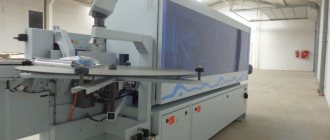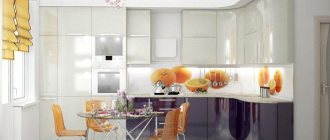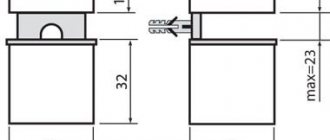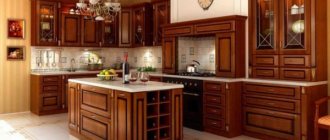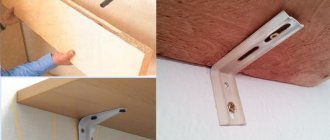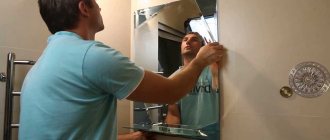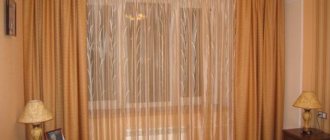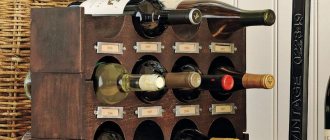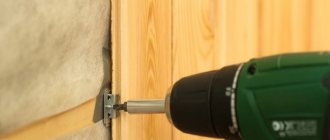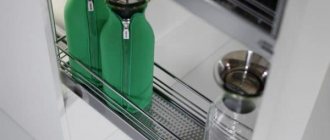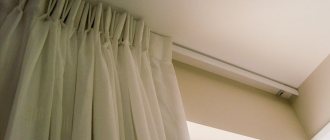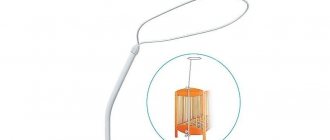Furniture fasteners are used to connect furniture elements. Its use makes it possible to reduce the cost of production in comparison with more complex fixation techniques such as tongue-and-groove or dovetail. In addition, the use of fasteners often makes it possible to avoid fastening furniture elements with glue. This makes it collapsible and facilitates transportation. When purchasing furniture, the connection of which is ensured by modern fasteners, it is delivered unassembled, so it is easier to bring it into apartments, houses and offices.
What types of furniture fasteners are there?
Modern types of fasteners include:
- Self-tapping screw.
- Confirmation.
- Eccentric coupler.
- Intersectional screed.
- Table top screed.
- Furniture corner.
- Rafix.
- Stock.
Self-tapping screw
This is a budget-friendly and common type of fastener that is used to connect two planes to each other. Hooks, loops and some types of handles are also attached using self-tapping screws. Self-tapping screws are cheap and screw in very quickly, especially when using a screwdriver. The disadvantage of such a screed is its weak fastening. Self-tapping screws are not suitable for all materials. They can be used on natural wood because its fibers hold the fastener threads securely. In the case of MDF or chipboard, they break out under load. When assembling furniture, before screwing in a self-tapping screw, it is recommended to first drill a hole to match its length, but with a smaller diameter. This will prevent the wood from cracking along the grain. This rule is mandatory when working with hardwood furniture.
Confirmat
This is a specialized screw tie that has a wide thread that provides a more secure fastening than a screw. Confirmat is only slightly more expensive, but it can work with chipboard and MDF. Before using it, it is also necessary to prepare the hole. Fastening is suitable if the furniture will be assembled and installed in one place without the need to further disassemble and transport it. The fact is that if the confirmat is often unscrewed and screwed in, then the cut thread in the chipboard or MDF is damaged and the screw is no longer held. In this case, a wooden chip is glued into the damaged hole. After drying, new drilling is carried out in it and the confirmat is screwed securely. This mount is not compatible with conventional Phillips screwdrivers. It requires a hex wrench, which is very inexpensive. It always comes with furniture.
When working with confirmat, screwing must be done with extreme caution, since if excessive force is applied, the thread will break. When using this fastener, its heads, recessed into the furniture, remain visible, which negatively affects aesthetics. To solve this problem, special plastic plugs are provided that are inserted into the hole for a hex key. Of course, they cannot completely solve the problem of visibility, but they make the furniture look more attractive.
Eccentric coupler
This fastener is also called minifix. It is used when it is necessary to connect furniture parts at right angles. The device consists of two elements: a rod and an eccentric. The cost of such fasteners is an order of magnitude higher than that of confirmed or self-tapping screws. To install it, you need to carry out precise drilling. In the future, when assembling, a screwdriver or screwdriver . Minifix can withstand repeated assembly and disassembly without damaging the mounting sockets. The eccentric coupler is invisible, so it is used when it is necessary to connect the front and side parts of furniture.
When using such furniture fasteners, you must also use a special Forstner drill. Private craftsmen who make furniture often refuse to use an eccentric coupler, since it requires complex high-precision drilling. In industrial production there are precision machines that eliminate errors, working according to a template or under CNC control, which makes it possible to install a minifix without any problems.
Intersectional screed
This type of fastener is designed specifically for tightly tightening sections of furniture together. It consists of a classic screw and a tall nut into which it is screwed. On its back side there is a cap that prevents the fasteners from passing through the prepared hole. Using a tie, you can tightly connect two cabinets together, which will add stability to them and prevent the formation of cracks. The height of the intersection screed can be varied, depending on the thickness of the surfaces that need to be connected.
Such furniture fasteners are usually installed in each corner of the furniture. It is placed 3-5 cm from its ends. To carry out precise drilling, the elements are usually first fixed together using a clamp. After that, one through hole is prepared, into which an intersectional tie is threaded.
Table top screed
Such furniture fasteners are used to tighten two parts of the tabletop together. Most often it is used when assembling kitchen furniture. Typically, 2 or more ties are used to connect tabletops to increase reliability. This fastener consists of a long bolt, a nut and a pair of rectangular rounded washers. To make the connection, a non-through wide hole is made with a feather drill on one and the second section of the tabletop. After this, a groove is cut between them and a tie is inserted. Using a screw, it is tightened, pressing the halves of the tabletop tightly.
Furniture corner
This is a budget method of connection, with which 2 parts are attached at right angles. It is used only if there will be a slight load on the furniture fasteners. Sometimes shelves are fixed using a corner, but in this case they can only be removed after it is disconnected. This fastener is held in place with self-tapping screws, which is the reason for its low efficiency. The fact is that only short screws can be used, which is due to the small thickness of the parts.
The reliability of the corner depends on its size. If its sides are long and it is possible to screw in several screws, then such fasteners can withstand quite serious loads, especially if made of steel or aluminum. For less critical fastenings, plastic corners with a lid are used to cover the screw heads.
Read also: Check valve for compressor receiver
Rafix
This furniture fastener is a type of eccentric coupler used to connect two pieces of furniture. It can be used to secure shelves. This device allows for simpler installation than using a minifix. This is due to the possibility of less precise drilling. This connection allows assembly and disassembly without causing damage to the parts being removed. The fastener itself consists of a coupling or dowel, which is inserted into the hole of one part, and a screw to secure it. A plastic eccentric is fixed to it, installed on the second piece of furniture. The eccentric is mounted in a large hole made with a Forstner drill.
Stock
This is the cheapest and oldest furniture fastener. It is also called chopik and dowel. It is a small wooden rod made in a cylindrical shape with chamfers on both ends. It is made from hard wood. Sometimes you can find plastic products. The surface of the rod is corrugated, which is necessary for better coating with wood glue. It is also possible to use a chopik without glue, but in this case the connection is less reliable.
This fastener is used to connect two furniture elements. To do this, holes are drilled in them opposite each other so that they fit together. After this, a small amount of glue is poured into them and the dowel is driven in. This connection method is quite reliable, but in the future it will not allow for safe disassembly of the furniture in the event of a move. The rod is cheap, so it is often used when assembling budget cabinets and desks that will be subject to light load.
Materials and colors
Furniture fasteners made of steel are considered the best. They are more resistant to loads, so when using them the assembly will be more reliable. For their production, ordinary steel is used, and therefore it is coated with a layer of zinc to protect against corrosion. Sometimes you can find black fasteners on sale, which is very rare. When using confirmat, there are no special requirements for color, since the visible caps are covered with plugs, the shade of which is already matched to the furniture. For self-tapping screws, color is important because they are often noticeable, especially when used to attach door hinges. They come in silver, black and gold.
Aluminum products are used much less often than steel fasteners. Their disadvantage is their increased thickness, since this metal is prone to deformation under load. Typically, corners are made from aluminum, as well as eccentrics for minifix and rafix.
In the production of certain types of fasteners, plastic is used. First of all, it is used for the manufacture of angles and rafix, namely the body of its eccentric. Plastic elements can have different colors. On sale you can find white, black, brown, etc. With corners, color is really important because they tend to be visible.
Only the stem is made of wood. It is made from different types of wood, so its shade may vary. This element is completely hidden.
To ensure high quality assembly and installation of interior elements, furniture fasteners are used. Depending on the location of fixation and method of connection, there are several varieties. These elements not only make the assembly and installation procedure easier, but will also be invisible after the process is completed.
How to fasten chipboard?
So, the simplest option for attaching metal or plastic parts (metaboxes, coat hooks, mounting corners) to laminated chipboard
, the
laminated chipboard
between each other and the sheets to the walls are self-tapping screws. They can be with countersunk heads (in Fig. No. 1, 3,4,5,6), with press washers (in Fig. No. 2) and dowel-nails (in Fig.
Interesting materials:
Where is Nissan Almera assembled? Where is Nissan Qashqai assembled for Russia? Where is Nissan Terrano assembled? Where is the Nissan X Trail assembled? Where is the new Toyota Camry assembled? Where is the new Kia Rio assembled? Where is the new Prado assembled? Where is the new Santa Fe 2022 assembled? Where is the new Tukson assembled? Where is the new tussun collected?
Varieties
The design and type of fastener will depend on the purpose of the furniture on which it is fixed. The elements can hold the product together inside, creating its frame, and also secure the base of the furniture to the wall or floor. Today the following types of fasteners are used:
- Furniture corner;
- Confirmation;
- Dowel;
- Screeds;
- Shelf supports;
- Bolt nut.
Each of these types has its own characteristics and features that distinguish them from each other. To find out which element is needed to assemble furniture, it is recommended to consider in detail the advantages and disadvantages of each category.
Furniture corner
This element belongs to a simple and outdated type of furniture fastener. It would seem that if a detail is outdated, then why talk about it? It's simple - such a corner will be useful for beginning assemblers. He will also become an assistant in the independent design of furniture products and subsequent assembly. In addition, its installation does not require any special equipment or skills. According to the production material, there are 2 types of furniture corners:
- Plastic - fastened with self-tapping screws, has a more miniature appearance and is relatively light weight. This corner is convenient to use for fastening light furniture panels or for supporting furniture parts;
- Metal - has stiffening ribs and is produced at an angle of 90 degrees. To fix the part, plastic or metal screws and couplings are used. There are holes on one side of the corner and grooves on the opposite side.
Such fasteners are used to connect the roof or bottom of a sliding wardrobe with its walls or when assembling cabinet kitchen furniture. Plastic options are equipped with a special plug, which gives the product a finished look. Metal ones are considered affordable and very durable. The disadvantages of fastening include the gradual loosening of surfaces secured with corners, as well as an unattractive appearance.
Confirmat
This name is usually used to refer to ordinary furniture screws. In another way they are called euroscrews, as well as euroscrews. The fastener is easy to install and does not require precision; a screwdriver or drill is required to fix it. In the screw head there is a hole for a hex key, which is also necessary for work.
To install this part, you need to drill two holes: one in the end of the part, and the other in the element that will be attached. The ease of assembling furniture using a confirmat allows the furniture maker to drill holes on site. It takes a minimum of time to complete the job. You can simplify the process as much as possible if you use a special drill for confirmation for installation. However, many furniture makers claim that over time this device becomes loose and the cutters become clogged with wood shavings. Therefore, for frequent use, standard drills are used.
The most popular and used confirmat size is 7x50 mm. Below are the pros and cons of using this fastener.
Read also: Soft start on lm358
| Advantages | Flaws |
| Easy installation, no special equipment required. | The confirmation hat will be visible if it is not covered with a cap that matches the color of the furniture. |
| The fasteners provide excellent connection between the parts. | The fastener cuts threads in the chipboard material and can deform it. |
| Able to withstand increased loads. | Furniture fastened with a confirmat cannot be assembled and disassembled more than 3 times. |
| If desired, the part can be corrected using a mallet. |
Based on the information provided, it is worth noting that these furniture fastenings are convenient and reliable. But if you can use them, then it is better to give preference to an eccentric coupler.
Dowel
Hidden types of fastening are a feature of furniture assembled using dowels. This is a small wooden cylinder, its dimensions are often 35x8 mm. The first number shows the height of the element, and the second indicates the diameter of the fastener. The essence of fastening with dowels is as follows:
- Holes are drilled in each of the two parts;
- The holes must be coaxial - that is, coincide in the location of the axis;
- A dowel is inserted into one hole, which only goes halfway deep;
- A second piece of furniture is placed on the cant protruding from the furniture piece - this is how they are tied together.
In order for the connection to have increased strength, the hole is treated with PVA glue, which additionally fixes the dowels and makes them motionless. The big advantage of this type of furniture fastener is that it remains invisible: it cannot be seen from the outside or the inside. The dowel connection has some disadvantages: it is done once, so it is extremely difficult to disassemble such furniture without damage. The second disadvantage is that precise drilling of holes is required for a perfect fit of the two components. This nuance creates the need to use special devices.
Devices for installing dowels are called conductors. They can be factory-made or home-made. The former are considered the best in quality, but the latter can be made independently.
Ties
Today, there are two main types of furniture screeds - eccentric and intersectional. It is necessary to consider in more detail each of these types separately:
- Eccentric tie – this element is used only in conditions of factory assembly of furniture. To place it on a furniture panel, you need to use a device to drill an exact hole. The main advantage of such fasteners is the ability to remain invisible, then the furniture acquires a neat and attractive appearance. Another advantage, compared to confirmed ones, is that such furniture fasteners allow you to assemble and disassemble furniture several times without losing rigidity. In addition, using an eccentric coupler it is possible to fasten parts at an angle;
- Intersectional tie - represented by a screw and a nut, with the help of which two perpendicular furniture elements are tightened. An intersectional screed is convenient for fixing the headboard and bottom of the bed, as well as tabletops. It is necessary to select fasteners based on the thickness of the particle board.
The most popular tie size is 32 mm, but this figure can reach 50 mm.
Shelf supports
A large number of shelf holders allows us to divide them into 2 subgroups: for parts made of chipboard and glass. In furniture showrooms you can find many models where glass is harmoniously combined with a wooden base. To efficiently hold two materials of different composition together, shelf holders are used.
Each type can be separately divided into two more categories: with and without fixation. Let's take a closer look at how to fix glass in furniture, as well as how to use a shelf holder for chipboard.
| Shelf holder for glass | Shelf holder for chipboard | |
| Design | Rod and screw. | Holder and screw. |
| Installation | They are screwed to the cabinet wall, and a shelf is inserted into the base. | The self-tapping screw is attached to the cabinet stack, and the shelf holder itself secures the plane of the shelf. |
| pros | Looks attractive and holds the shelf steady. | Reliable fixation of the shelf, thanks to the thread in the material. |
| Minuses | An elastic spacer is required to prevent the shelf from loosening. | The hole in the shelf and the wall must match perfectly. |
When installing shelves in a cabinet or cabinet, you cannot do without shelf supports. They should ideally match the style of the furniture and be combined with the general principles of the interior.
Bolt nut
Previously, the bolt-nut system was widely used to fix furniture parts. With this connection, a hole was drilled in both surfaces through which the bolt was threaded. On the other side of the cabinet wall, this bolt was secured with a nut. Today, a screw with a nut is also used - it is the simplest type of connection of furniture parts. The screw is equipped with a semicircular head, which, after connecting to the nut, does not rotate, but remains motionless. This fastener is easy to use, but with the advent of new materials, it has faded into the background. Bolts with nuts are suitable for use by craftsmen at the initial level of assembly.
The advantages of such fasteners are:
- Possibility of self-assembly;
- Availability of parts;
- Possibility of reusable assembly and disassembly of furniture.
Among the disadvantages is the visibility of the fasteners, which is why they have ceased to be relevant. Another significant drawback is the ability to connect only parallel surfaces.
Types, depending on the material to which it is attached
Modern manufacturers today use not only chipboard to make furniture. Glass, metal parts, and plastic elements are widely used. Fastenings for furniture made of chipboard were discussed throughout the material, and options for fastening objects made from other raw materials are discussed below:
- Glass - screw-type holders are used that are screwed into a wall made of concrete or plasterboard. They are used to fix shelves and mirror surfaces without damaging the coating of the part. For glass doors on the cabinet, the use of furniture hinges is suitable;
- Metal – screw fastenings are used to connect the shelves of metal racks. They are screwed into the racks using a drill or screwdriver. An attractive cap is installed on the front side;
- Plastic – plastic parts can be secured using any chipboard fasteners.
Separately, it is worth highlighting the dovetail fastening - it is used to connect drawers. The essence of the connection is to cut out a comb surface on each part, which is inserted into another part, resulting in end-to-end fixation. Choose only the type of fastening that suits you best. Before purchasing, be sure to calculate the thickness of the material so that during the assembly process screws and screws do not protrude on the surface.
Read also: DIY metal shelf
Modern furniture fittings offer a wide range of furniture fasteners, each of which has its own area of application depending on the type of connection and the materials used. In this article we will examine in detail the main furniture fasteners that are used to make furniture in professional workshops and by home craftsmen.
This type of fastening is rarely used on its own in the modern furniture industry. It is mainly used only to impart rigidity in conjunction with eccentric couplers.
Its main function in most cases of furniture construction is to prevent the panels from moving relative to each other and giving additional rigidity to the fastening.
Usually used in conjunction with an eccentric coupler. It is made from hard natural wood and has a cylindrical shape. This is a very simple and cheap part that has been used in wooden joints since time immemorial.
Craftsmen and carpenters who work with wood use furniture dowels as the main fastening element. In this case, the furniture parts are connected to dowels, which are glued to the parts using PVA glue. In this case, using any other screeds together with PVA no longer makes sense.
Screw tie
The screw coupler consists of a screw and a barrel. This kit is used to attach the end of one panel to the face of another. For example, for attaching a shelf to a side panel or a headboard to the drawers.
This is a very strong fastening due to the large tightening stroke. The only drawback of this fastener is that the screw head is visible from the front of the panel.
You can, of course, close them with special plugs, but this is also not a panacea. The plugs on the outer panel of the cabinet do not look aesthetically pleasing.
Installation of this type of fastener requires skills. Beginners may encounter such a problem as inaccurate alignment of the barrel holes with the hole in the end of the shelf, and it is not so easy to remove the unwanted barrel from its nest.
But the inconvenience during assembly and aesthetic errors are more than compensated for by the reliability and durability of the connection.
Conical coupler
The conical tie is often used for fastening thick chipboard panels (25 mm, 38 mm) and assembling frame facades on tie bars.
One of its advantages is the absence of visible caps on the front side of the panels. Unlike the screw in a screw tie, the rod used in a tapered tie is screwed into the panel. The screed itself has 2 holes. One is for the rod, which is screwed into the panel layer. The second is for the conical tie screw. The disadvantage of this type of fastener is the small tightening stroke. Under heavy loads, the holes for the rod screw may become loose over time. Then the screed will simply stop working!
Furniture corner
Quite a simple type of fastener. Easy to install. Does not require any additional holes in the panels for its installation. There are both metal and plastic options.
Euroscrew
This fastener is often used for assembling kitchen furniture modules and in economy class furniture. Just like with a screw tie, Euroscrew heads or plugs are visible on the front side of the side panel of the cabinet.
It screws into the end of the shelf with a pre-drilled hole. This screed also belongs to the economy class. To install it, 2 holes are drilled - into the end of the shelf and into the face of the part. They are attached perpendicular to each other. The most commonly used euroscrews are 7 mm in diameter and 50 or 70 mm in length.
This screed has 2 significant drawbacks:
Firstly
, the outer side of the cabinet, if there are many shelves behind it, as a rule, is all “disfigured” with caps or Euroscrew plugs. Therefore, these fasteners are used in economy furniture. In kitchens, this drawback is hidden thanks to the cabinets standing in a row.
Secondly
, furniture assembled with euroscrews cannot be disassembled and reassembled more than 3 times, since screwing the tie into the end of the shelf destroys its internal structure.
Eccentric coupler
One of the most popular types of fasteners today. All high-quality furniture is assembled on an eccentric screed (minifix). Its operating principle is as follows: an eccentric rod is screwed into the face of the part to which another panel will be attached at the end, into which the eccentric itself is screwed through the end of the other shelf, and then the eccentric turns the rod into itself.
An eccentric tie is always used in conjunction with a wooden dowel, which was described earlier. The dowel provides additional rigidity to the assembly and prevents the fixed panels from moving relative to each other.
Furniture assembled on this screed can be disassembled and assembled an unlimited number of times! There are different diameters of the eccentric itself: 25, 15, 12 mm. More common is an eccentric with a diameter of 15 mm.
Since the eccentric itself is visible on the side panel, plugs are provided for it to match the color of the panel. One of the disadvantages is the weakening of the tie in the event of spontaneous rotation of the eccentric.
To avoid this, some hardware manufacturers have provided notches directed in the opposite direction from its rotation during installation, which enhances adhesion.
Types of eccentric couplers
As practice shows, furniture is assembled and disassembled with great difficulty if all the fasteners in it are metal ties, described above. Let’s say that in order to remove one shelf, you practically need to disassemble half the cabinet. For horizontal parts (shelves), it is more convenient to use eccentrics, which allow you to place horizontal parts in an already assembled furniture box. Their operating principle is the same as that of the previously described eccentric coupler. The only difference is that the eccentric, located in the shelf, fits onto the rod screwed into the face of the sidewall from above and there is no need to disassemble half the cabinet for this. In some factories, this type of fastener is called a shelf holder, since it is intended only for horizontal parts. Horizontal shelves assembled using these ties further tighten the joint, which increases the rigidity of the entire furniture frame.
Repeated dismantling and installation of furniture on such fasteners does not lead to wear of the connections.
Fastening chipboard: types of fasteners, methods of installation to the wall, connecting chipboard to each other
- Installing the bar. You should attach it to the cut, then screw it with self-tapping screws;
- The cracks of the tabletop and the ends must be coated with silicone sealant;
- Then you can connect the elements together;
- The clamp is placed directly into the grooves. On the opposite side of the nut, there will be a tightening head, under which washers are placed;
- Next, tighten the nuts with a wrench, pulling the tabletops tightly;
- The clamps must be tightened crosswise.
What it is?
To understand the features of using laminated particle boards, you need to clearly understand how laminated chipboard differs from other structural and finishing materials. Its base is a regular chipboard, which we talked about in this article.
Most often, boards of classes P3 and P6 are laminated, because they are intended for use in dry rooms . However, chipboard of other classes is also found.
Laminated chipboard is produced in the form of slabs (sheets)
of rectangular shape and different sizes .
In addition, the edges of the sheets can be either smooth or equipped with a tongue-and-groove type lock; such a lock is called a tongue and groove.
Sheets with smooth edges are available clean and covered with laminating film.
During the production of laminated chipboard , the edges are clean , because even large slabs are cut from huge sheets, the length of which often exceeds 5 m. Companies that produce laminated chipboard also supply with it an edge tape , which is glued to the clean cut, making the entire surface of the sheet one color.
Making furniture yourself
Stores offer a wide selection of furniture laminate of any color, as well as various accessories, so finding material for making furniture is not difficult. The main problem is the equipment for processing laminated chipboards.
A good cutting machine cannot be installed in a garage due to its large size, so to make furniture, you will have to cut sheets into cabinet shelves and wall panels in a furniture or carpentry shop equipped with a circular saw with a movable table.
A jigsaw and a hand router with a set of cutters are not very expensive , so people with average incomes or those who do carpentry and finishing work can afford to buy them.
The main problem faced by everyone who does not have experience in carpentry and plumbing, but is trying to make furniture on their own, is the inability
to drill holes at the desired angle in relation to the face and edge of the slab.
They solve this problem with the help of a conductor , and everyone comes up with their own form of this device.
If all the holes are marked and drilled correctly, then furniture assembly will be accessible even to an inexperienced person; the main thing is not to rush and constantly check the drawing.
Therefore, having experience and the necessary equipment, you can make furniture from laminated chipboard in your own garage, cutting sheets into parts in the nearest furniture or carpentry shop.
Advantages and disadvantages of chipboard wall panels
Chipboards have gained popularity due to their positive quality characteristics:
- a huge selection of colors and textures;
- possibility of painting after installation;
- no special care products are required;
- installation is carried out in the shortest possible time without any special difficulties;
- reasonable prices, allowing a buyer with a small budget to choose the right material;
- withstands exposure to high temperatures and direct sunlight, exhibits resistance to mechanical stress and abrasion;
- have a presentable appearance (chipboard), which lasts for a long time.
Expert opinion
Strebizh Viktor Fedorovich, leading construction foreman
This need usually arises in a corner kitchen, in U-shaped sets, as well as in long surfaces where the length of one panel is not enough. If you want to clarify something, please contact me!
